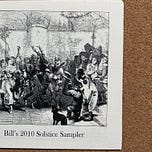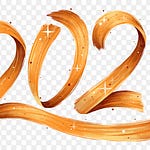Playlist:
The Spirit of Christmas Steve Ashley 2:41
Stir the Fire John Kirkpatrick 3:50
Spirit of God Straw into Gold 4:20
Green Peter Mayer 3:18
Music notes
The Spirit of Christmas When the Emperor Constantine made Christianity the official religion of the Roman Empire in the year 380 the new state religion had a problem. People throughout the Empire, including in Rome itself, were continuing with their observation of their old pagan midwinter holidays. These included celebration of Saturnalia, Sol Invictus and the Kalends of January. All of these had roots related to the winter solstice, and all involved ancient pagan rituals and customs as well as many days of joyous merrymaking.
Like our celebration of Christmas, most people observed the holiday season more as a secular celebration than as religious holy days. People did not necessarily believe in the religious meaning and importance of the days’ rites; they just enjoyed the feasts, parties and traditions that accompanied them.
Both the Emperor and the Church knew that it would be impossible to eradicate the joyous midwinter customs and festivities, but the Church was already working on that. Nearly fifty years earlier it had begun re-purposing the midwinter holiday season for its followers. The local church in Rome had selected December 25 – the feast of the Unconquered Sun, and the purported birth date of many of the gods of the old religions including the popular Mithras – as the date to commemorate Christ's birth.
Over time, January 1 (the Kalends) was identified as the date of Jesus’ circumcision, and January 6 was chosen to commemorate his baptism. (The actual dates of these events in Christ's life were not known.) The days in between were also given holy meaning: For example, December 26 was dedicated to the early martyr St. Stephan, Dec. 27 was given to St. John, Dec 28 was Holy Innocents Day, etc.
The traditional festivities and customs could therefore continue as before, but with new nominal meaning. However, even then devout believers decried excesses in the non-religious observance of the season, just as people today complain that the secular celebration of Christmas overshadows the core religious nature of the occasion.
This song was written and performed in 1974 by Steve Ashley, the original lead singer of the pioneering folk-rock Albion Country Band, as part of a cycle of songs tracing the changing seasons. I got it from a 4 CD anthology box-set issued by Britain’s folk-music oriented Free Reed record label. It is called Midwinter: A Celebration of the folk music & traditions of Christmas & the Turning of the Year. Instead of liner notes it has a full-colour illustrated 140 page book. I highly recommend it!
Stir the Fire Fire, the source of both heat and light, and the Sun, the foundation of all life on Earth, have always been the core elements of Winter Solstice festivities. There was a time when people really believed that their sacred solstice rites were essential to ensuring the return of Summer. But I suspect that many of our early ancestors were skeptical about this and recognized that the seasonal cycle took its own course regardless of what people did or did not do (although the unpredictable aspects of daily weather and occasional ice ages may periodically have returned people back to pagan religious devotedness.)
But over time, people's core beliefs and new understandings of natural forces changed. Sacred rituals evolved into traditions that were continued simply for the enjoyment and comfort they gave. For example, we know that Yule log ceremonies were very common in Christian medieval times. The rite of making a ceremonial fire at this time of year by burning an extra-large stump or log almost certainly goes back a long, long time.
No Christian symbolism was ever given to the Yule log custom, yet it continued to be observed through times when heretics were burnt at the stake. It seems unlikely that 17th century Catholics and Protestants really believed their fire ritual to be an essential appeasement to the forces of nature.
We can see how this happened since we certainly cherish and maintain our own holiday traditions. We sing the old classic nativity Christmas carols whether we believe in their words or not. We confer the ritual seasonal greeting of “Merry Christmas!” despite the fact that the archaic word “merry” is rarely used otherwise. We decorate our houses with a lighted tree (a relatively new custom that arose as the ancient Yule log ceremony custom declined) and special lights. We eat fruitcake at this time of year whether or not we enjoy the taste.
There is still a tradition in some parts of England and Scotland that it is bad luck for a midwinter visitor to speak before he or she has given the hearth fire a ceremonial stirring with the poker. The phrase “Stir the fire and light the light!” is the opening line from many old English mummer's plays that have been revived by English Morris dance groups.
This song is by the esteemed accordion player John Kirkpatrick, one of England's most influential folklorists and a keen advocate for Morris dancing. He wrote it in 1995 for a touring stage show called Wassail! that had been commissioned for that year’s pre-Christmas season by Folkworks, the North of England Folk Music Development Agency, and this recording is from that show. (More about that tomorrow.)
Spirit of God Finding God in Nature is not unique to pagans. This song was written in 1965 by Sister Miriam Therese Winter, a Catholic nun and a Professor of Theology at Hartford Seminary. It is performed here by the group Straw into Gold who sang Sing to the Baby on my December 11 posting, and is from their non-Christmas 1995 Substance and Essence album. In fact, it was because of this song that I bought the album.
Green The core of Winter Solstice celebration is not that it is the longest night and shortest day of the year: It is the promise of Spring to come. In midwinter, that promise of the return of light, and warmth, and life, is not yet apparent in nature except through astronomical observation. But we celebrate the certainty that they will come. The Winter Solstice does not mark the birth of Spring, but it does mark it's conception.
This song is by singer-songwriter Peter Mayer of Stillwater, Minnesota. Over the past 30 years he has released eleven albums, and he is another singer-songwriter whose website I check every year hoping that he has released another album of thoughtful solstice music. It is from his self-published 2005 album Midwinter. Here is the album and the lyrics.
Sampler-making recollections
I had some very good extra songs when I compiled my 2005 Solstice Sampler (which I will feature on Solstice Eve, Dec 20) so I immediately began collecting and seeking out music for a sequel. By 2010 I was ready. But where my first Solstice sampler had been somewhat erudite and not very suitable as background music, I wanted this one to be more festive and approachable.
For the most part, the songs and styles of the music on this one sound are quite contemporary, sometimes drawn from neo-pagan ceremonies.
I was also less strict about avoiding any references to Christmas. In fact, as with this set, the sampler’s first song begins “I am the ghost of Christmas past…”. From the beginning I have had some self-imposed rules. One is never to have two selections from the same performer on the same sampler (unless the performer put them together.) I cheated with the 2010 Sampler because Minnesota singer-songwriter had two meaningful and beautiful songs that were just too perfect for the Solstice theme. And at that time I did not know that making solstice samplers would become such a core part of my annual project that I would change its name from Bill’s Christmas Samplers to Bill’s Midwinter Music.
This was another year where my liner notes were quite skimpy about the performers in order to make room for what amounted to an essay about the Winter Solstice, and the songs were often chosen to give me an opportunity to tell that story. The above Music Notes will give you an idea of what those liner notes were like. The first two songs today were also the first two on the Sampler and my music notes above were derived from their liner notes.
I considered reproducing my liner notes in full here but decided that I will be telling the same tale in special treats on Solstice Eve (the longest night) and Solstice Day (the shortest day), and I have already covered most of that material in much greater depth here online in Bill’s Midwinter Music, especially in my Ancient Origins series and a related essay.
Dec 7, 2001 How can we know about early paganism? Potential sources of information
Dec 9, 2001 Paleolithic paganism - origins of religion
Dec 11, 2001 Prehistoric hunter-gatherers and animism
Dec 13, 2001 A time of rapid technological, social and cultural change and the beginning of polytheism
Dec 14, 2001 The story of two big Neolithic timepieces
Dec 15, 2001 Celtic, Germanic and Nordic paganism
Dec 18, 2001 Introduction to folkloric study of Yuletide customs preserved in current traditions
Dec 21, 2001 Winter fires: candles, fireplaces, bonfires, fireworks, and Yule logs
Dec 21, 2022 Luck-visits, wassails, and Christmas caroling














Share this post